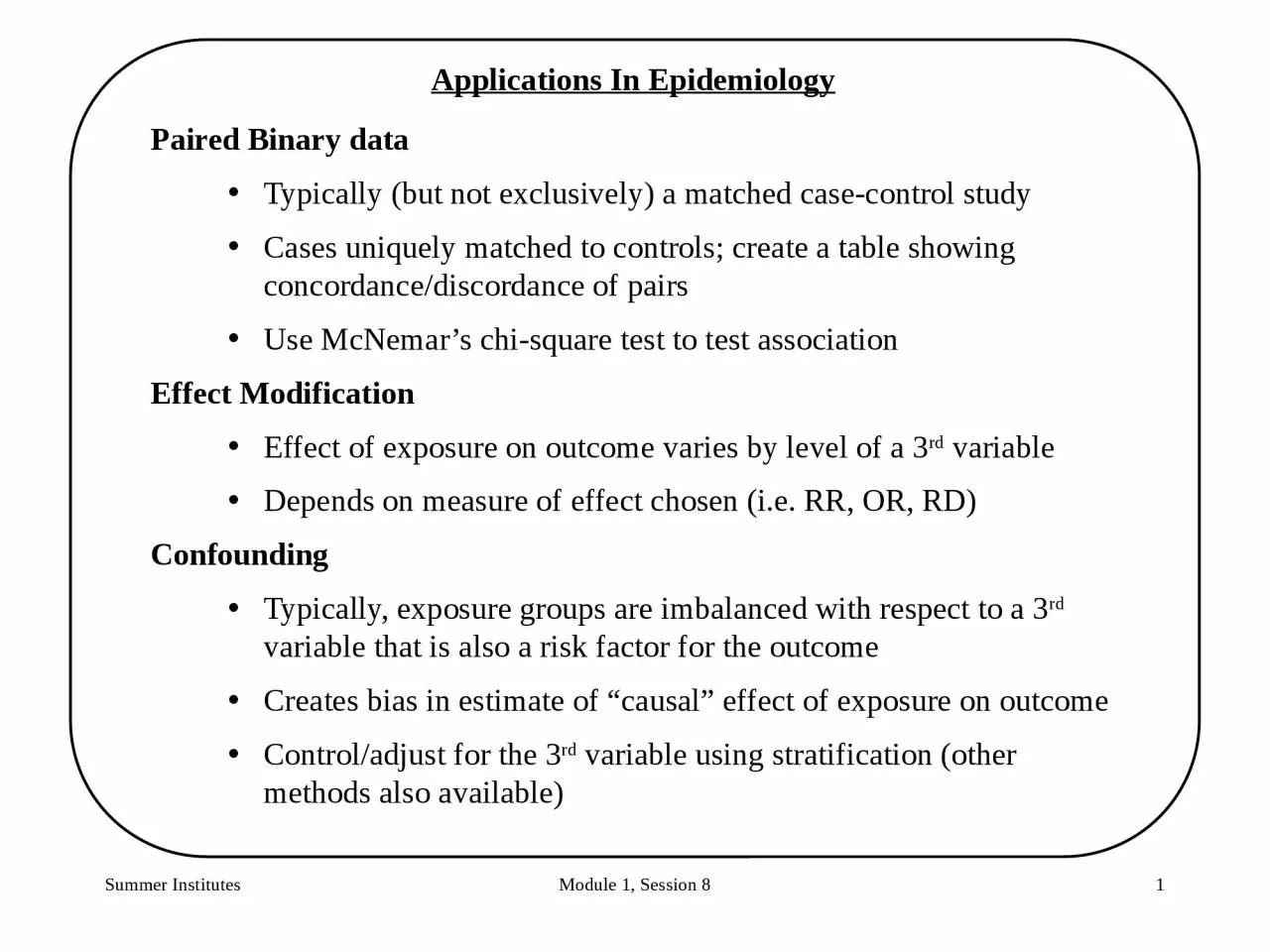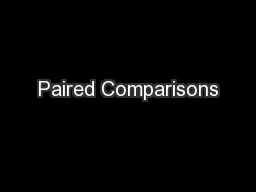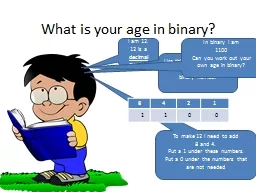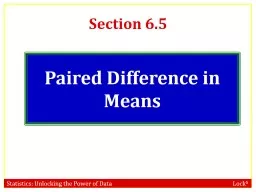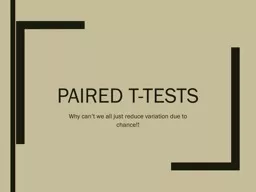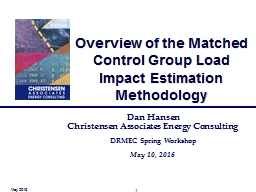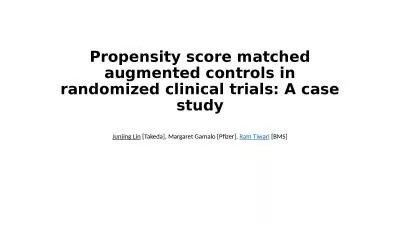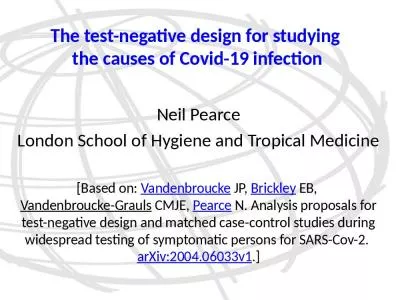PPT-Paired Binary data Typically (but not exclusively) a matched case-control study
Author : genevieve | Published Date : 2023-12-30
Cases uniquely matched to controls create a table showing concordancediscordance of pairs Use McNemars chisquare test to test association Effect Modification Effect
Presentation Embed Code
Download Presentation
Download Presentation The PPT/PDF document "Paired Binary data Typically (but not ex..." is the property of its rightful owner. Permission is granted to download and print the materials on this website for personal, non-commercial use only, and to display it on your personal computer provided you do not modify the materials and that you retain all copyright notices contained in the materials. By downloading content from our website, you accept the terms of this agreement.
Paired Binary data Typically (but not exclusively) a matched case-control study: Transcript
Download Rules Of Document
"Paired Binary data Typically (but not exclusively) a matched case-control study"The content belongs to its owner. You may download and print it for personal use, without modification, and keep all copyright notices. By downloading, you agree to these terms.
Related Documents

